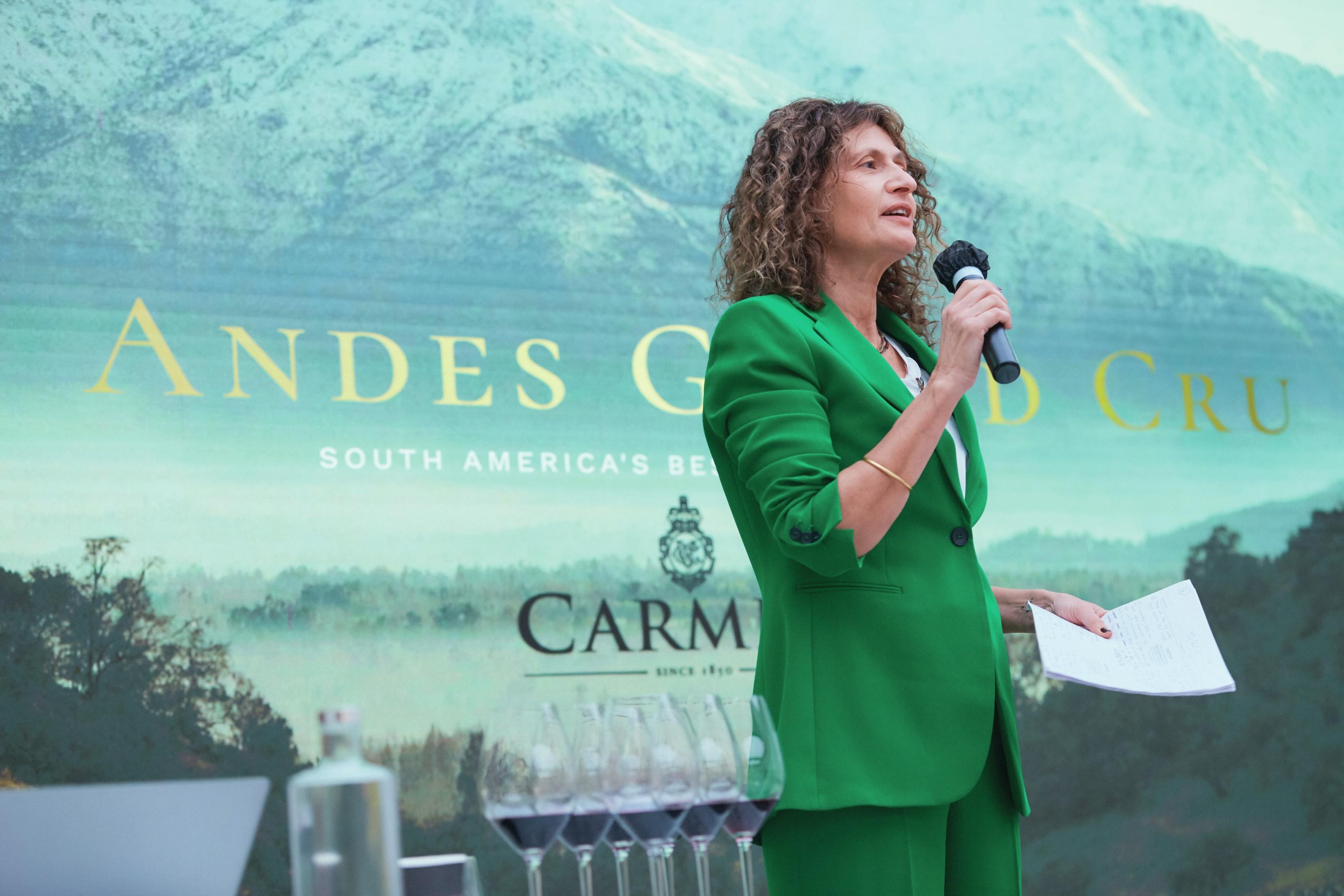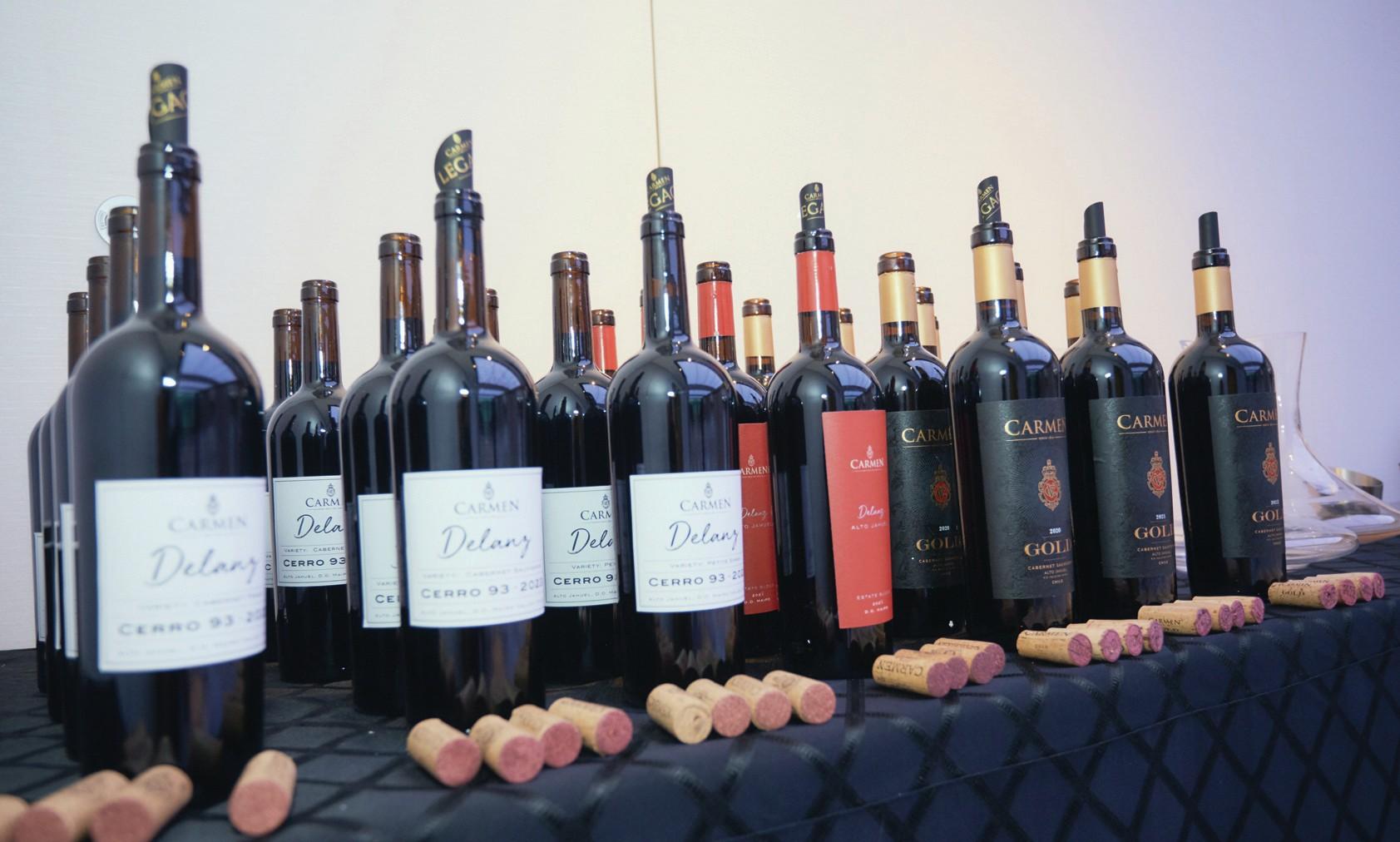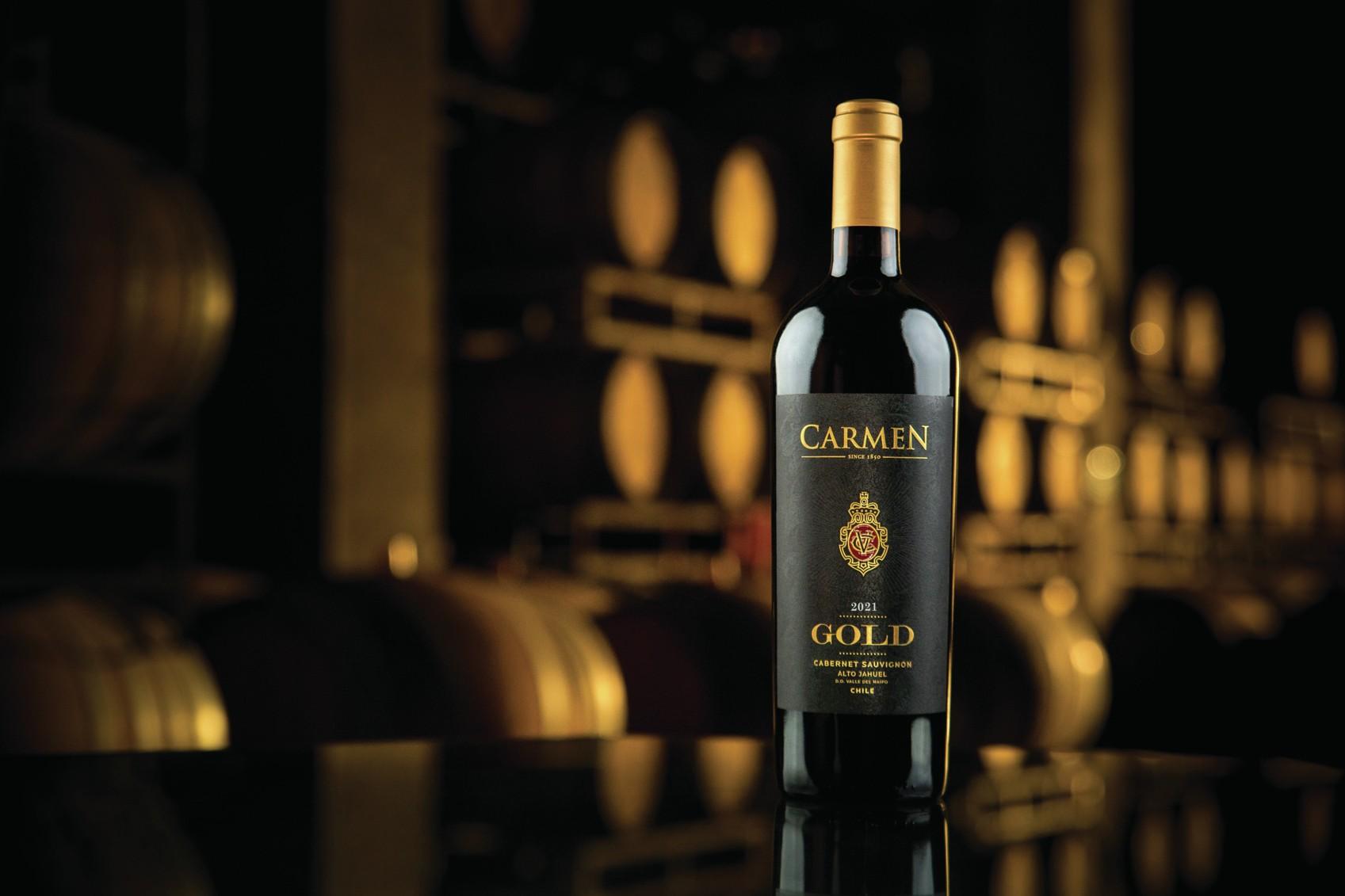This website uses cookies so that we can provide you with the best user experience possible. Cookie information is stored in your browser and performs functions such as recognising you when you return to our website and helping our team to understand which sections of the website you find most interesting and useful.
Viña Carmen: why Chilean terroir gives heart to Bordeaux blends
Six months after joining Santa Rita Estates as Viña Carmen winemaker, Ana María Cumsille flew over to Hong Kong to host a masterclass on some of the winery’s most iconic expressions.

WHAT ELEMENTS do you need to make the perfect fine wine? For Viña Carmen, Chile’s oldest winery, it’s the land, the climate – and the people themselves.
With “good quality, good grapes and good people”, new Carmen winemaker Ana María Cumsille said, it’s clear, even from her short time so far at the winery, that Carmen has “all the components to make one of the best wines in Chile”.
Chile is a long, narrow country, home to more than 300 wineries, 18 valleys and 85 appellations, and is “located very far from here” Cumsille joked during a masterclass held in Hong Kong.
Cumsille, who was named one of db’s 100 Master Winemakers in 2024, gave a whistle-stop tour of Chile’s wine regions from top to bottom during the session, explaining some of the history of Viña Carmen before homing in on the wines showcased for the tasting.
Carmen was founded in 1850 with plantings of French grape varieties. The winery is proud to be the oldest in Chile, Cumsille said, and although it doesn’t have “the 500 years of history of some wineries in France”, Carmen’s legacy is a vital part of the winemaking history in the country.
Viña Carmen has adopted the French concept of grand cru vineyards. As Cumsille explained, the three key valleys of note for producing Carmen’s topquality grapes are: Limarí in the north of the country, home to Chardonnay vineyards which produce Carmen’s grand cru sparkling wine; Alto Maipo, the home of its Cabernet Sauvignon vines; and further south, Apalta, which has “one of the best terroirs for Carmenere in Chile”, she explained.
During the session, Delanz Cabernet Sauvignon Alto Jahuel 2021 was tasted, along with three components from the 2023 harvest: Cabernet Sauvignon, Cabernet Franc, and a Petite Sirah. The 2020, 2021 and 2022 vintages of its icon wine, Carmen Gold, were also poured. The masterclass focused on Alto Maipo, located only 35km from Santiago, as the birthplace of Chile’s fine wines.
Nestled in the foothills of the Andes and recognised as one of the best terroirs in the world for Cabernet Sauvignon, the Alto Jahuel sub-region stands out in the Maipo Valley.

Freshness, colour and concentration are key when it comes to winemaking, as the three elements “produce wines which are very fruity and fresh, with high acidity and very polished tannins”, Cumsille said during the tasting. “That is important for us because we want to make very elegant wines,” she added. The name Carmen Gold was created in the 1980s when a gold mine was discovered in Alto Jahuel. Four plots are dedicated to the icon wine – a mix between flat areas and hillside sites, with Cabernet Sauvignon as the focus.
“It’s a very important wine for us,” Cumsille explained. “In this wine we try to make the best selection from our property. Some years we change some components, but the most important thing is not to change the style.”

NO RECIPE
Carmen Gold has no recipe. Instead: “The blend is always made through tasting,” Cumsille explained. Her goal is therefore simple: “I try to make the best wine.” And, in doing so, her aim is to show the terroir inside the bottle.
Carmen Gold is a “Bordeaux blend, but not a Bordeaux wine – you have to take the techniques and adapt to the terroir”, Cumsille adds.
This year marked her first vintage with Viña Carmen, but she’s no stranger to the wines that came before her. “When I joined the winery, I tasted many vintages of Carmen Gold,” Cumsille said, candidly telling masterclass attendees that the 2022 vintage in particular is “one of the most elegant wines”.
She explained: “The vintage was a little cooler than the previous vintage in 2021, which gives the wine a lot of freshness, high acidity and more tension. With this wine you have to wait a little in the glass – sometimes the first nose is a lot of red, fresh fruits, but later some herbal and spicy notes appear. This kind of wine you have to take time to taste. It’s not about the first impression.”
This goes for the wine’s ageing potential, as well as its first impression in the glass. When asked the best time to drink Carmen Gold, Cumsille replied: “I’d say at least 10 years, but I think it could even be 20 or more.”
Carmen Gold’s first vintage was in 1993 and, with more than 30 years of history under its belt, the wine’s quality and success speak for themselves. It’s therefore a question of how many bottles you can get your hands on. As Cumsille joked, fans of Viña Carmen’s icon wine should be sure to drink “one bottle every year” to really see how the wine develops over time.
Related news
Green goals: MA Silva launches eco-friendly Neo Select stopper

